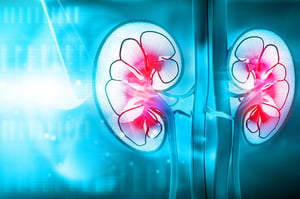End-Stage-Renal Disease’s Devastating Stats
End-stage-renal-disease (ESRD) is devastating. In 2014, 118,000 people in the United States started treatment for ESRD, and 662,000 were living on chronic dialysis or with a  kidney transplant.
kidney transplant.
While the number of ESRD incident cases plateaued in 2010, the number of ESRD-prevalent cases continues to rise by about 21,000 cases per year.
- Men are 64% more likely than women to develop ESRD
- African Americans are 3 times more likely than whites to develop ESRD
- Hispanics are 35% more likely than non-Hispanics to develop ESRD
- In U.S. adults ages 18 or older, the main reported causes of new cases of ESRD are diabetes and high blood pressure.
Most patients with ESRD begin renal replacement therapy with hemodialysis (In 2014, 87.9 percent). Almost 10 percent begin renal replacement with peritoneal dialysis, and 2.6 percent received a pre-emptive kidney transplant
At the beginning of 2015, 63.1 percent of all ESRD patients were receiving hemodialysis therapy, 6.9 percent were being treated with peritoneal dialysis, and 29.6 percent had a functioning kidney transplant. Among hemodialysis cases, 88.0 percent used in-center hemodialysis, and 1.8 percent used home hemodialysis.
References:
https://www.cdc.gov/kidneydisease/pdf/kidney_factsheet.pdf




